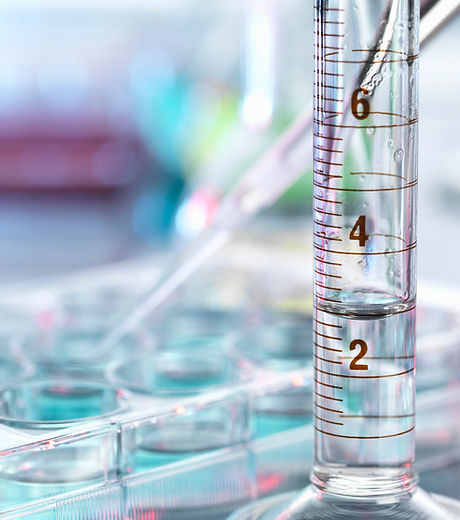Science 8
Unit Plan - Mix and Flow of Matter

Content Standards
The materials that we use—including natural and manufactured ones—often take the form of fluids. Students
learn that such diverse substances as air, natural gas, water and oil are fluids. In further investigations, they
discover that many common household materials are aqueous solutions or suspensions in which the main
component is water. Students learn that the properties of individual fluids are important to their use, including
such properties as density, buoyancy, viscosity and the fluid’s response to changes in temperature and
pressure. The particle model of matter is introduced to help students make a conceptual link between the
nature of matter and the specific behaviour of fluids.

Essential Questions
* What are fluids?
* What are they made of and how do we use them?
* What properties of fluids are important to their use?
Key Terms/Big Ideas
Students will understand:
* Pure substances, mixtures and solutions
* Solute and solvent
* Concentration
* Solubility and saturation points
* Particle model of matter
* Properties of fluids
* Viscosity and flow rate
* Mass, volume, density
* Pressure
* Buoyancy

Unit Outcomes
Knowledge objectives (key outcomes):
General Outcome 1: Investigate and describe fluids used in
technological devices and everyday materials
General Outcome 2: Investigate and describe the composition of
fluids, and interpret the behaviour of materials in solution
General Outcome 3: Investigate and compare the properties of
gases and liquids; and relate variations in their viscosity,
density, buoyancy and compressibility to the particle model of
matter
General Outcome 4: Identify, interpret and apply technologies
based on properties of fluids
Report Card Outcomes:
1. Analyzes and solves problems through scientific reasoning
2. Understands and makes connections between concepts
3. Develops skills for inquiry and communication
4. Explores scientific events and issues in society and the environment




Lesson #1
Particle Model of Matter
Watch the following video on the particle Model of Matter:
https://www.youtube.com/watch?v=i0sOq7EbQWI
In notes copy down all points of particle model of matter.
Work on the the following Gizmo on the Phases of Matter:
https://www.explorelearning.com/index.cfm?method=cResource.dspView&ResourceID=661
Use the Student Exploration sheet write down your answers:
https://el-gizmos.s3.amazonaws.com/materials/PhasesWaterSE.pdf




Lesson #2
Mixing and Dissolving
Watch the following powerpoint presentation.
https://drive.google.com/open?id=1pczVBe71lq8gV9OP-Ry3vvUv2b1WY9lvNBChqgd-5wo
Copy out the following points in your notes:
Classification scheme for all matter
Define each key term and give an example.
Classify the following mixtures as either:
Pure substance or mixtures.
If pure classify as elements or compounds.
If they are mixtures classify as Homogeneous or Heterogeneous.
Orange Juice
Mouthwash
Potting soil
Dirty water
Clean air
Gold
Iodine and water
Italian salad dressing
Kool-aid
Carbon dioxide
Viscosity
Watch and write a definition of viscosity in your notes. How does temperature affect viscosity. Give some real life examples of viscosity.
https://www.youtube.com/watch?v=GRqxvCNmYg0
Flow Rate
Watch and write down 2 examples of of how to calculate flow rate:
https://www.youtube.com/watch?v=HmROgEGfIUg
In your notes write the relationship between viscosity and flow rate. For example what happens to flow rate with changes in viscosity.




Lesson #3
Solubility
Watch the following powerpoint on Solubility:
https://docs.google.com/presentation/d/1YY9dcN5LqJsf649A-pneESx4EtkxmJQBTK_Q0uzHr9k/edit?usp=sharing
Watch the following video. This will guide you through the process of reading a solubility graph.
https://www.youtube.com/watch?v=D2NAw-A0V1s
Complete the following assignment:(you will have to print off the pages)
https://docs.google.com/document/d/1gMP8J3Iui7SdfRvC_WVibfwwi0scI_ChiJvFbBXmeew/edit?usp=sharing
Use this graph to answer questions:
http://www.kentchemistry.com/links/Kinetics/SolubilityCurves.htm




Lesson #4
Project
In this project you will put your learning into practice by researching a real world application that involves the concepts learned in the previous lessons . You are to create a powerpoint presentation to share with the class. Be sure to use examples from the particle model of matter, classification of the mixtures, solutes, solvents, solubility, temperature, viscosity and flow rate. Some examples of topics are: mining of metals, extracting oil from oil sands, manufacturing carbonated soft drinks, dry cleaning, sewage treatment, water treatment or the role of blood and plasma in human body. You can choose your own topic, however it must be approved by your teacher. Your presentation should be no longer than 5 minutes and you can work on your own or with a partner.